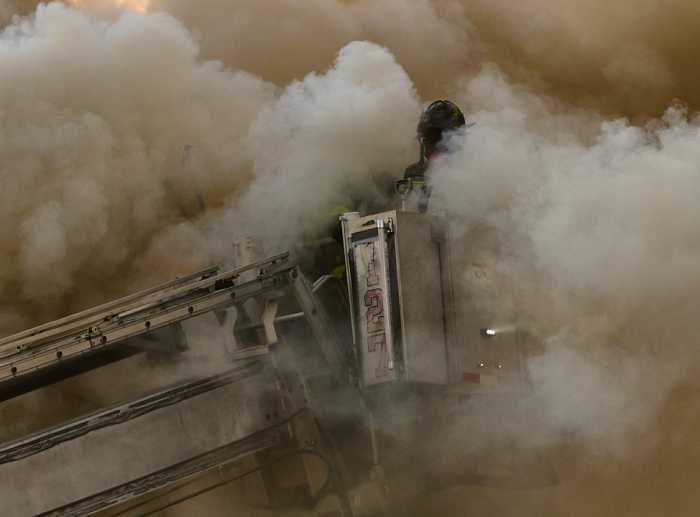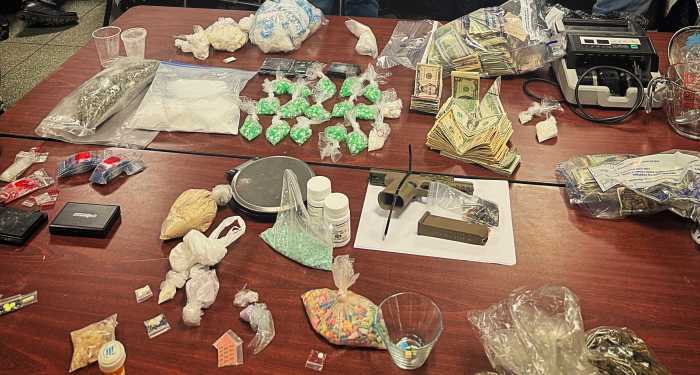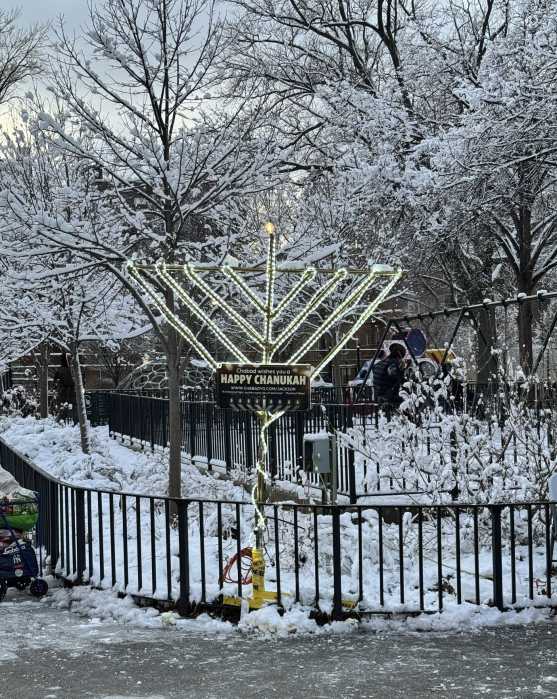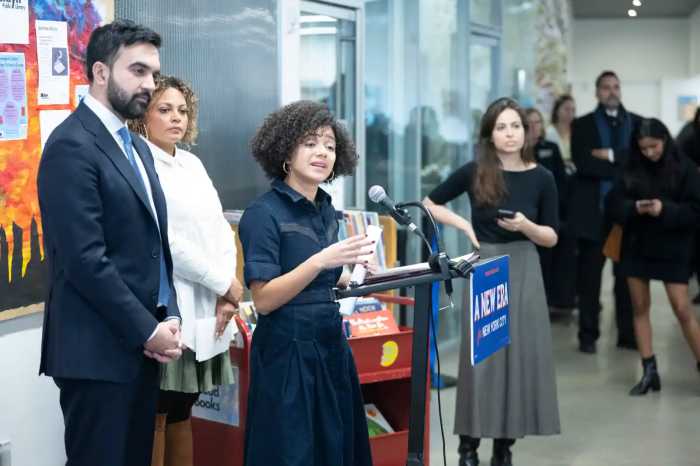By Christina Santucci
Nighttime in the Channel is the easiest time to estimate how many residents of the 22-block-long coastal enclave have not returned after Hurricane Sandy.
“You can tell just by going down the block,” said Broad Channel resident Marty Feeney about streets dotted with homes whose lights haven’t been flipped back on since the superstorm and empty houses with bare interiors.
“When you walk around at night, there are lights on and they aren’t finished,” said Feeney’s sister-in-law, Colleen Keegan, who is among dozens of displaced residents. “People ran out of money.”
For the Blake family, the process of rebuilding their Cross Bay Boulevard home has been complicated by 38-year-old Julie’s second bout with cancer.
“If you asked me a year ago how long we would be out of the house, I would have said, ‘We’ll be back in six months,’ and now here it is a year later and a hammer hasn’t been swung,” the mother of two said while standing inside her mostly gutted two-story home Sunday afternoon. “We just don’t have the funds for it.”
The next day she was scheduled to receive her last radiation treatment, which had been paired with chemotherapy to combat a diagnosis of uterine and cervical cancer earlier this year.
On June 27, Julie Blake had undergone a hysterectomy, and test results right after the procedure showed that she had full-blown versions of both cancers.
“So that put a lot of things in perspective, too,” she said. “I don’t want to say it’s a lesson because losing the house was lesson enough, but we slowed down worrying about the house during that time.”
Their home still bears the once-red sticker from the city Department of Buildings marking it as an “unsafe area.”
“It’s almost like nobody wants to touch the house because they think that it has to be knocked down,” Julie Blake said.
The morning that Sandy struck, Julie Blake led family and friends, her children and their pets — a dog, a cat and a lizard — to a hotel in Ozone Park, while her husband John Blake stayed behind at the house until about 4 p.m., when he realized the extent of the storm surge.
A yacht club’s crane that had been attached to the organization’s back deck washed up behind the Blakes’ home and was banging at the back of the house, and three home heating oil burners — including their own — overturned, dumping oil into the house, Julie Blake said.
“You can see the water line,” she said, pointing to the faded brown mark on the wall of her kitchen 4 feet off the ground. “And you can smell the oil.”
The family was initially offered $68,000 from their insurance company, but to replace the house would likely cost $180,000, and that figure would not include the foundation, Julie Blake said.
The Blakes are also waiting on a quote for the price of raising the house to prevent future flooding damage, which would require additional money.
Julie Blake said the family applied for a loan from the Federal Emergency Management Agency, but the agency only offered them $55,000 and repaying the money would be an additional financial burden.
For the past several months, the Blakes have been paying about $3,100 for both their mortgage and rent for an apartment in the Rockaways. The family spent the first six months after the storm at an apartment in Glendale, and FEMA initially helped with two months’ rent.
She estimated the family lost about $45,000 in furniture and appliances — they received $10,000 for belongings from insurance.
“The things that you lose that were most valuable — our wedding video — those things you can’t put prices on,” Julie Blake said, describing destroyed furniture from her grandparents that she refurbished.
“The front room was the kids’ playroom and just everything had to go. What do you save when everything is covered in oil?” she said.
Each time the Blake children — Hunter, 10, and Hannah, 6 — return to the house, they joyously discover a handful of toys and knickknacks that survived the storm.
“I’ve never heard a 5-year-old say the word destroy more,” Julie Blake said. “She’ll say, ‘Oh, I had that but Sandy destroyed it.’ … It’s heartbreaking.”
Meanwhile, Hunter pines for playthings that were unsalvable.
Julie Blake, who works in human resources at a private sanitation company, said her family’s history in Broad Channel dated back four or five generations, and she has no plans to leave.
“When people ask us why we are still here, that’s a pretty compelling reason. Our whole life is here,” Julie Blake said. “Where else would we go?”
Superstorm Sandy wreaked havoc in much of the Broad Channel community, which is situated between Howard Beach and the Rockaways, with the storm surge as high as 7 feet flooding homes and sending cars and boats careening through the neighborhood like projectiles.
“It was a waiting game,” said Cross Bay Boulevard resident Mark Ott, who stayed in his house for the storm.
At about 10 p.m., a boat drifted over to his home, and rested on electrical wires outside and Ott’s metal railing.
“We were worried about it coming into the house,” he said.
Ott jumped aboard, found the key in the ignition, started the boat named “E-Z Goin” and ran it aground along the main thoroughfare through the Channel, where it stayed for several weeks after Sandy.
“We are pretty much forgotten,” said iron worker Ed Phillips, whose housing situation remained in limbo one year after Sandy.
“The city came in and condemned the house,” he said. “That doesn’t mean I get paid from my insurance.”
Phillips, 38, said his neighbor’s oil tank spilled out underneath his East 8th Road home and that resident’s insurance company is offering to pay for demolition and a foundation at Phillips’ property.
“Who is paying for four walls and a roof?” he asked, explaining that he found the crawl space under the house still filled with oil a week after the storm.
Like the Blake family, the Phillips are also paying both the mortgage and rent for an apartment in Broad Channel.
The family of three managed to ride out the aftermath of the storm in a mobile home on the property for about a month before it became too difficult for their 4-year-old girl without heat.
“I’m in a holding pattern because of all of this,” he said.
Phillips applied for and was granted a $200,000 SBA loan, with $14,000 given out up front, but the condition was that the rest of the money had to be used within six months, and because of the delay dealing with his neighbor’s insurance, Phillips had to stop the larger amount and now must pay back the initial funds in three years, he said.
“Now the tears are gone,” he said. “There is nothing to even cry about, and getting angry is just going to give me a heart attack.”
For Keegan, who has spent the past few months at her brother-in-law’s home, the issue has been getting a hold of the insurance payout from her bank to rebuild.
“When you took apart the walls in an old house, it was like opening a can of worms,” Keegan said. “We didn’t realize the extent.”
But recently, she was able to get construction permits to fix the home she shares with her 17-year-old daughter Meghan. Her husband died of cancer nine years ago.
“I’m hoping to be back by Christmas,” Keegan said. “I will be happy if I can put up a Christmas tree.”
Keegan said she and many of her neighbors have been confused about specifications for homes to be raised above sea level, so that property owners can prevent increases in flood insurance premiums.
“It’s just so much uncertainty,” she said.
So far, at least one Broad Channel homeowner is moving ahead with placing piles underneath a residence on Noel Road.
Neighbor Gregory Frank said the process began two to three months ago and in the end the house would be more than 8 feet above the ground.
“I guess if it’s safe, it’s a good thing,” he said.
Reach managing editor Christina Santucci by e-mail at timesledgerphotos@gmail.com by phone at 718-260-4589.


















































